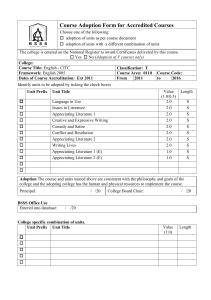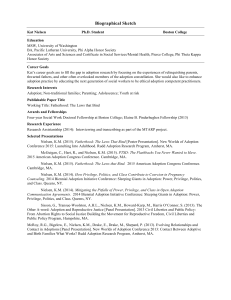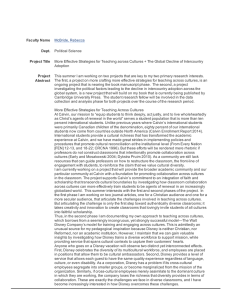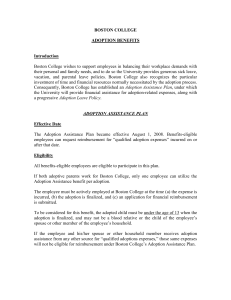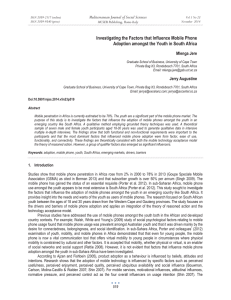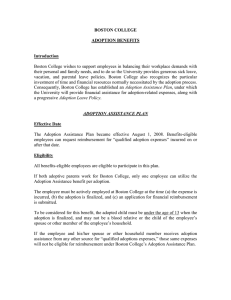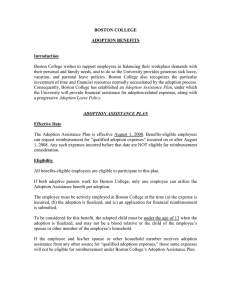A371_2015AbstractClarkNathanD Abstract
advertisement
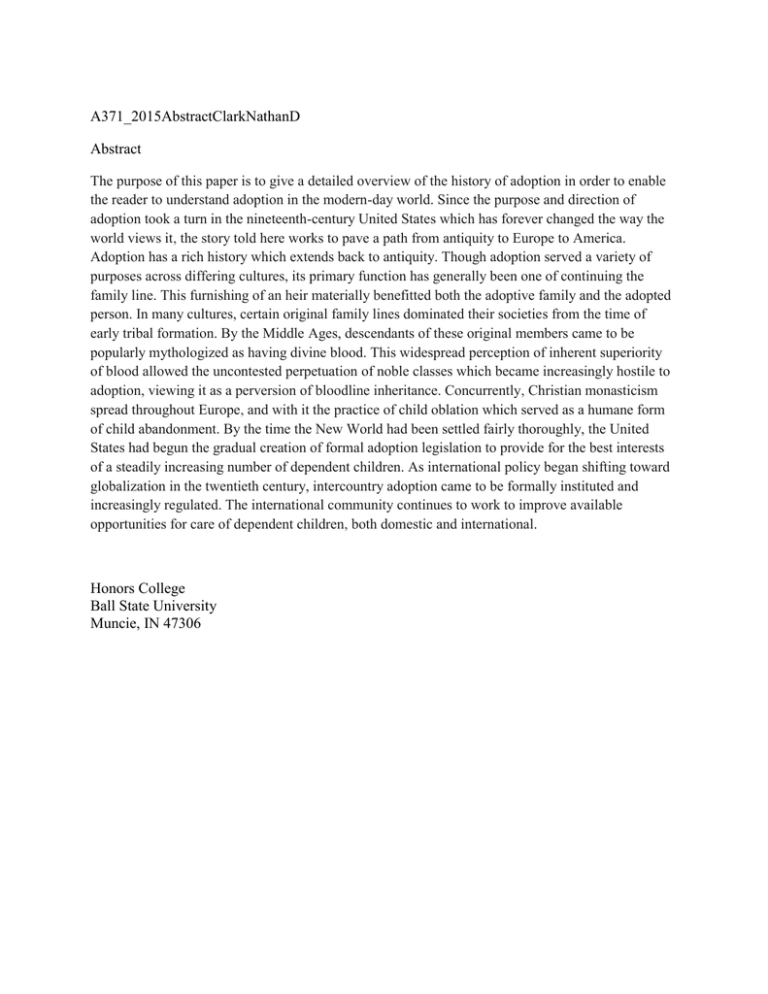
A371_2015AbstractClarkNathanD Abstract The purpose of this paper is to give a detailed overview of the history of adoption in order to enable the reader to understand adoption in the modern-day world. Since the purpose and direction of adoption took a turn in the nineteenth-century United States which has forever changed the way the world views it, the story told here works to pave a path from antiquity to Europe to America. Adoption has a rich history which extends back to antiquity. Though adoption served a variety of purposes across differing cultures, its primary function has generally been one of continuing the family line. This furnishing of an heir materially benefitted both the adoptive family and the adopted person. In many cultures, certain original family lines dominated their societies from the time of early tribal formation. By the Middle Ages, descendants of these original members came to be popularly mythologized as having divine blood. This widespread perception of inherent superiority of blood allowed the uncontested perpetuation of noble classes which became increasingly hostile to adoption, viewing it as a perversion of bloodline inheritance. Concurrently, Christian monasticism spread throughout Europe, and with it the practice of child oblation which served as a humane form of child abandonment. By the time the New World had been settled fairly thoroughly, the United States had begun the gradual creation of formal adoption legislation to provide for the best interests of a steadily increasing number of dependent children. As international policy began shifting toward globalization in the twentieth century, intercountry adoption came to be formally instituted and increasingly regulated. The international community continues to work to improve available opportunities for care of dependent children, both domestic and international. Honors College Ball State University Muncie, IN 47306





